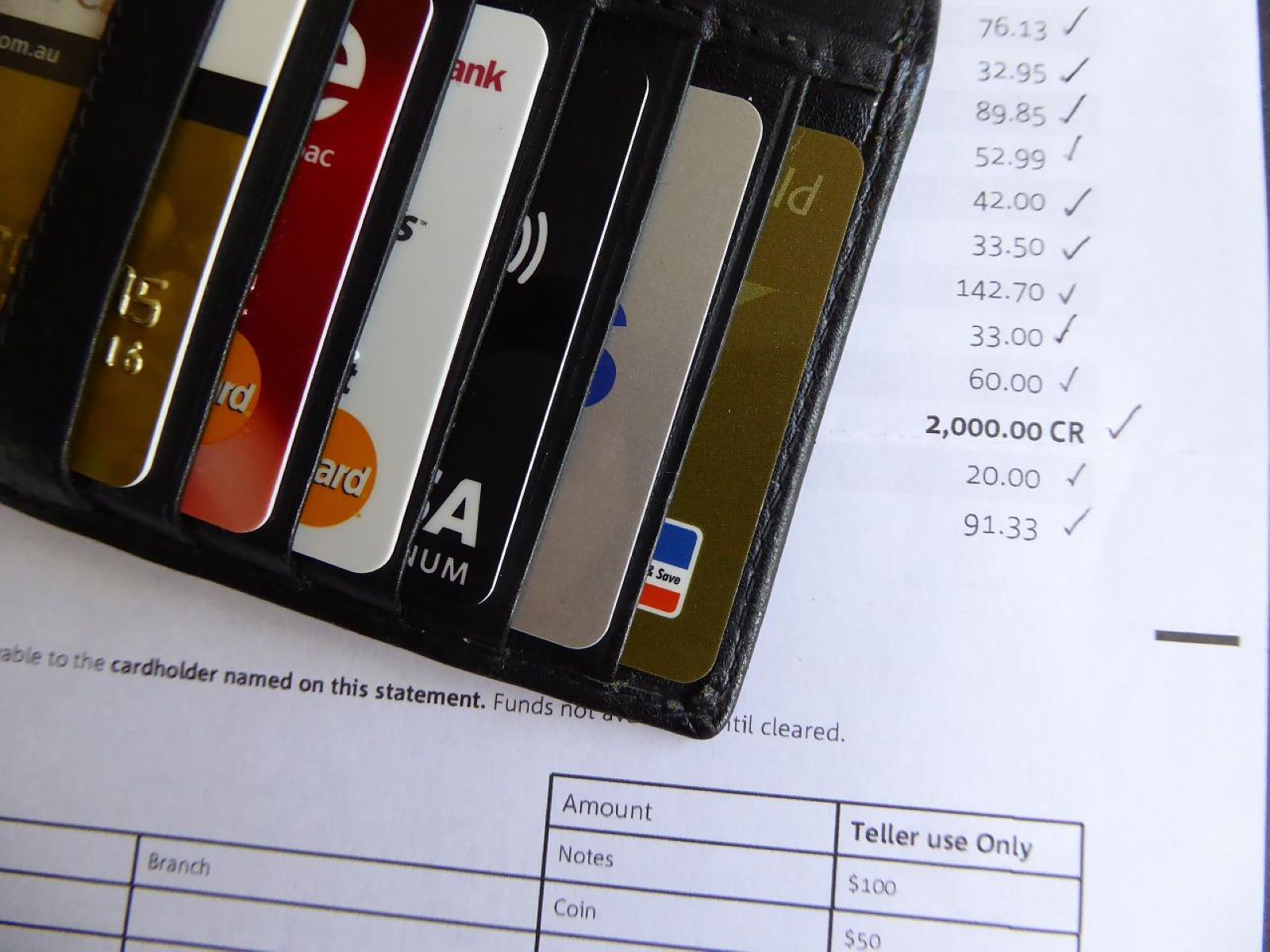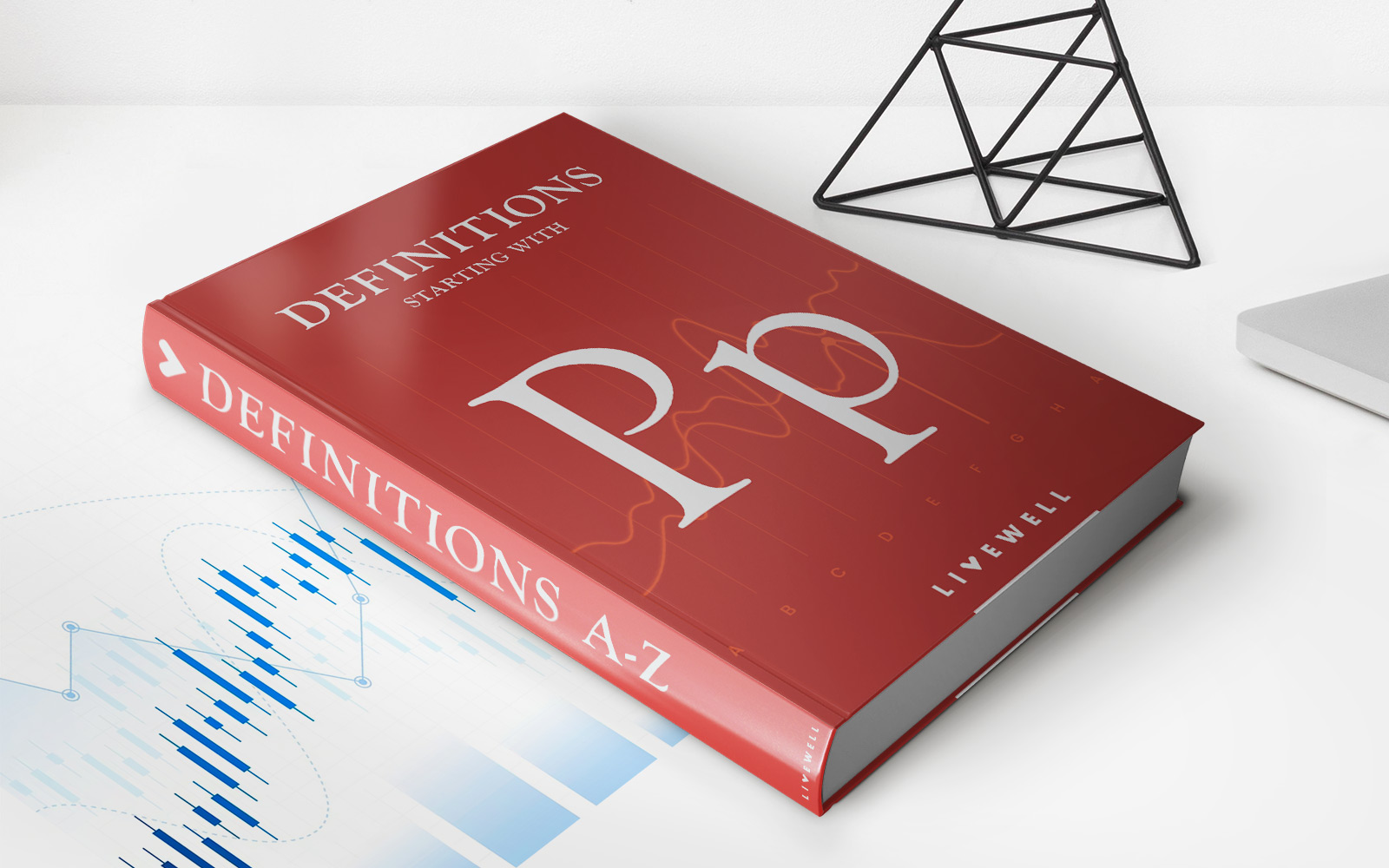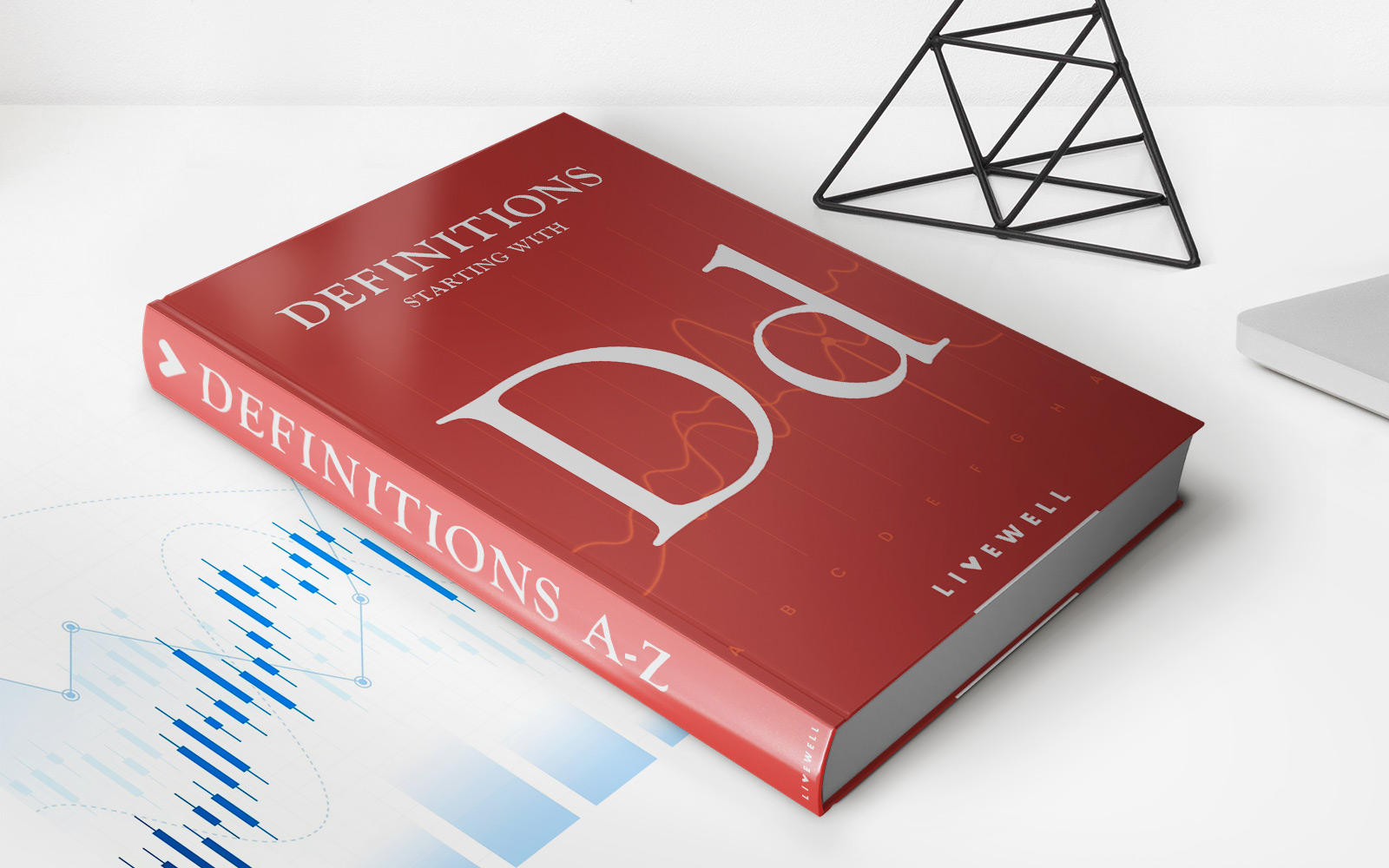

Finance
What Does A Revolving Credit Card Mean
Modified: March 5, 2024
Learn about revolving credit cards and how they work in the world of finance. Understand the benefits and potential drawbacks of this type of credit card.
(Many of the links in this article redirect to a specific reviewed product. Your purchase of these products through affiliate links helps to generate commission for LiveWell, at no extra cost. Learn more)
Table of Contents
- Understanding the World of Revolving Credit Cards
- Unveiling the Essence of Revolving Credit Cards
- Unlocking the Mechanics of Revolving Credit Cards
- Exploring the Benefits of Utilizing Revolving Credit Cards
- Navigating the Potential Drawbacks of Revolving Credit Cards
- Navigating Prudent Practices for Optimal Utilization
- Navigating the Realm of Revolving Credit Cards with Prudence and Insight
Introduction
Understanding the World of Revolving Credit Cards
Welcome to the fascinating world of revolving credit cards! In today’s dynamic financial landscape, credit cards have become an integral part of our daily lives, offering unparalleled convenience and financial flexibility. Among the various types of credit cards available, the concept of revolving credit cards stands out as a versatile and widely utilized option. Whether you’re a seasoned financial guru or just starting to navigate the realm of personal finance, understanding the nuances of revolving credit cards is essential for making informed decisions about your financial well-being.
Unlike traditional credit cards, which require the cardholder to pay off the entire balance each month, revolving credit cards offer a unique payment structure that allows users to carry a balance from one month to the next, with the flexibility to pay it off over time. This distinctive feature of revolving credit cards provides individuals with the freedom to manage their expenses and cash flow more effectively, making it a popular choice for many consumers.
Throughout this comprehensive guide, we will delve into the intricacies of revolving credit cards, exploring their definition, functionality, advantages, disadvantages, and practical tips for using them wisely. By the end of this journey, you will have gained a profound understanding of revolving credit cards, empowering you to make informed decisions and leverage this financial tool to its fullest potential.
Definition of Revolving Credit Card
Unveiling the Essence of Revolving Credit Cards
A revolving credit card is a financial instrument that allows cardholders to carry a balance from one billing cycle to the next, offering the flexibility to make partial payments while accruing interest on the remaining balance. Unlike traditional credit cards, which mandate full payment of the outstanding balance each month, revolving credit cards empower users to manage their cash flow more effectively by spreading out payments over time.
When a consumer utilizes a revolving credit card, they are granted a predetermined credit limit, which represents the maximum amount they can borrow. This credit limit is determined based on various factors, including the individual’s credit history, income, and overall creditworthiness. Once the cardholder makes a purchase or utilizes the card for transactions, the corresponding amount is added to their outstanding balance, which can be paid off in full or carried over to the next billing cycle.
One of the defining features of revolving credit cards is the ability to make minimum payments, typically a small percentage of the outstanding balance, thereby providing a degree of flexibility in managing financial obligations. However, it’s important to note that carrying a balance on a revolving credit card incurs interest charges, which can significantly impact the overall cost of borrowed funds if not managed prudently.
Furthermore, revolving credit cards often offer revolving lines of credit, allowing users to access funds up to their credit limit, similar to a personal line of credit. This aspect adds another layer of versatility, enabling individuals to address unexpected expenses or manage cash flow fluctuations without the need for a traditional loan or installment payments.
By comprehending the fundamental nature of revolving credit cards, individuals can harness the benefits of this financial tool while navigating the associated responsibilities and considerations with confidence and clarity.
How Revolving Credit Cards Work
Unlocking the Mechanics of Revolving Credit Cards
Revolving credit cards operate on a unique payment structure that distinguishes them from traditional credit cards. When a cardholder makes purchases or utilizes the card for transactions, the corresponding amount is added to their outstanding balance. Unlike conventional credit cards, which necessitate the full repayment of the balance each month, revolving credit cards offer the flexibility to carry a balance from one billing cycle to the next, with the option to make partial payments.
Upon receiving the monthly statement, the cardholder is presented with the choice of paying the full outstanding balance, a partial amount, or the minimum payment, which typically constitutes a small percentage of the total balance. Opting to pay the minimum amount allows the cardholder to carry the remaining balance forward, subject to accruing interest charges. It’s important to recognize that the interest accrued on the outstanding balance contributes to the overall cost of borrowing and can have a substantial impact on the cardholder’s financial obligations if not managed judiciously.
Furthermore, revolving credit cards often feature a grace period, during which no interest is charged on new purchases if the outstanding balance is paid in full by the due date. This grace period serves as a valuable benefit, providing cardholders with the opportunity to manage their expenses strategically and minimize interest costs.
Additionally, revolving credit cards offer a revolving line of credit, enabling cardholders to access funds up to their credit limit. This feature mirrors a personal line of credit, affording users the flexibility to borrow funds as needed without the constraints of a traditional loan or fixed installment payments. By leveraging this revolving line of credit, individuals can address unforeseen expenses or manage cash flow fluctuations with ease.
Understanding the mechanics of revolving credit cards empowers individuals to navigate their financial obligations with prudence and foresight, enabling them to make informed decisions regarding their spending habits, payment strategies, and overall financial well-being.
Advantages of Revolving Credit Cards
Exploring the Benefits of Utilizing Revolving Credit Cards
Revolving credit cards offer a myriad of advantages that cater to the diverse financial needs and preferences of consumers. Understanding these benefits can empower individuals to make informed decisions and leverage the unique features of revolving credit cards to their advantage.
- Flexibility in Payment: One of the primary advantages of revolving credit cards is the flexibility they provide in managing financial obligations. Unlike traditional credit cards that mandate full payment each month, revolving credit cards allow users to carry a balance and make partial payments, offering greater control over cash flow and expenses.
- Revolving Line of Credit: The revolving nature of these credit cards grants users access to a revolving line of credit, enabling them to borrow funds up to their credit limit. This feature offers a convenient source of financial flexibility, allowing individuals to address unexpected expenses or manage cash flow without the constraints of a traditional loan.
- Grace Period for Interest-Free Purchases: Many revolving credit cards provide a grace period during which no interest is charged on new purchases if the outstanding balance is paid in full by the due date. This feature allows cardholders to strategically manage their expenses and minimize interest costs, enhancing their overall financial efficiency.
- Build and Improve Credit History: Responsible utilization of revolving credit cards can contribute to building and improving an individual’s credit history. By making timely payments and maintaining a healthy credit utilization ratio, cardholders can demonstrate financial responsibility, which can positively impact their credit score over time.
- Convenient Access to Funds: Revolving credit cards provide convenient access to funds, offering a readily available source of credit for everyday expenses, emergency situations, or planned purchases. This accessibility can offer peace of mind and financial security, knowing that funds are accessible when needed.
By capitalizing on these advantages, individuals can harness the inherent flexibility and financial benefits of revolving credit cards, enhancing their ability to manage expenses, address financial needs, and cultivate a positive credit profile.
Disadvantages of Revolving Credit Cards
Navigating the Potential Drawbacks of Revolving Credit Cards
While revolving credit cards offer a range of benefits, it’s essential to acknowledge and navigate the potential disadvantages associated with their utilization. Understanding these drawbacks can empower individuals to make informed decisions and exercise prudence in managing their financial obligations.
- Accrual of Interest Charges: Carrying a balance on a revolving credit card incurs interest charges, which can significantly increase the overall cost of borrowed funds. If the outstanding balance is not managed diligently, the accumulation of interest can lead to substantial financial burdens over time.
- Potential for Debt Accumulation: The flexibility of making minimum payments on revolving credit cards can potentially lead to the accumulation of debt if not managed responsibly. Individuals may find themselves carrying balances from month to month, resulting in prolonged interest accrual and a cycle of debt if not addressed proactively.
- Impact on Credit Score: High credit utilization, which occurs when a significant portion of the credit limit is utilized, can negatively impact an individual’s credit score. Revolving credit cards, if not managed prudently, can contribute to elevated credit utilization, potentially affecting the overall creditworthiness of the cardholder.
- Templation for Overspending: The accessibility and flexibility of revolving credit cards can tempt individuals to overspend or make impulsive purchases beyond their means. Without conscientious budgeting and financial discipline, this can lead to financial strain and challenges in repaying the accrued balances.
- Complexity in Payment Management: Balancing multiple outstanding balances and managing varying interest rates on revolving credit cards can introduce complexity in payment management. Without a clear repayment strategy, individuals may find it challenging to effectively allocate funds and prioritize debt repayment.
By recognizing and addressing these potential disadvantages, individuals can approach the utilization of revolving credit cards with a balanced perspective, leveraging their benefits while mitigating the associated risks and challenges. Practicing financial mindfulness and responsible credit management is paramount in maximizing the advantages of revolving credit cards while minimizing their potential drawbacks.
Tips for Using Revolving Credit Cards Wisely
Navigating Prudent Practices for Optimal Utilization
Effectively managing revolving credit cards requires a strategic approach and conscientious financial behavior. By implementing prudent practices and exercising discipline, individuals can harness the benefits of revolving credit cards while mitigating potential risks. Here are essential tips for using revolving credit cards wisely:
- Monitor Credit Utilization: Maintain a healthy credit utilization ratio by managing the amount of credit utilized relative to the total available credit. Aim to keep credit utilization below 30% to demonstrate responsible credit management and minimize the impact on your credit score.
- Pay Balances in Full: Whenever possible, strive to pay off the outstanding balance in full each month to avoid accruing interest charges. This practice not only minimizes the cost of borrowing but also fosters responsible financial habits and reduces the risk of accumulating debt.
- Strategically Utilize Grace Periods: Capitalize on the grace period offered by revolving credit cards to make interest-free purchases. By paying the outstanding balance in full by the due date, you can optimize the benefits of interest-free periods and minimize interest expenses.
- Make Timely Payments: Ensure prompt and punctual payments to avoid late fees and safeguard your credit standing. Set up payment reminders or automatic payments to mitigate the risk of missing due dates and incurring penalties.
- Exercise Financial Discipline: Practice prudent spending habits and avoid impulsive purchases that may lead to unnecessary debt accumulation. Create a budget and adhere to it, distinguishing between essential expenses and discretionary spending to maintain financial stability.
- Regularly Review Statements: Routinely review your credit card statements to monitor transactions, identify any unauthorized charges, and track your spending patterns. This proactive approach can help detect potential discrepancies and ensure accurate financial management.
- Explore Reward Programs and Benefits: Take advantage of reward programs and benefits offered by your revolving credit card, such as cashback incentives, travel rewards, or purchase protections. Maximize the value of your card by leveraging these perks while staying mindful of your overall spending.
By integrating these tips into your financial practices, you can navigate the realm of revolving credit cards with prudence and foresight, optimizing the benefits while safeguarding your financial well-being.
Conclusion
Navigating the Realm of Revolving Credit Cards with Prudence and Insight
In the dynamic landscape of personal finance, revolving credit cards serve as a versatile and valuable tool, offering individuals the flexibility to manage their expenses and cash flow while accessing a revolving line of credit. By understanding the essence of revolving credit cards, including their benefits, drawbacks, and prudent practices for utilization, individuals can navigate this financial realm with prudence and insight.
It is essential to recognize that while revolving credit cards provide unparalleled flexibility, they also entail responsibilities and potential risks. By maintaining a balanced approach to their utilization, individuals can capitalize on the benefits of these financial instruments while mitigating the associated challenges. Strategic management of credit utilization, timely payments, and conscientious spending habits are paramount in leveraging revolving credit cards to their fullest potential.
Furthermore, the judicious utilization of revolving credit cards can contribute to building and improving an individual’s credit history, fostering financial discipline, and providing convenient access to funds when needed. By integrating prudent practices, such as monitoring credit utilization, paying balances in full, and strategically leveraging grace periods, individuals can optimize the benefits of revolving credit cards while safeguarding their financial well-being.
Ultimately, the effective utilization of revolving credit cards hinges on informed decision-making, financial mindfulness, and a proactive approach to credit management. By embracing these principles, individuals can harness the advantages of revolving credit cards while navigating the potential drawbacks with resilience and foresight.
As you embark on your journey in the realm of revolving credit cards, may these insights empower you to make informed choices, exercise prudent financial behavior, and leverage this financial tool to enhance your financial well-being.














